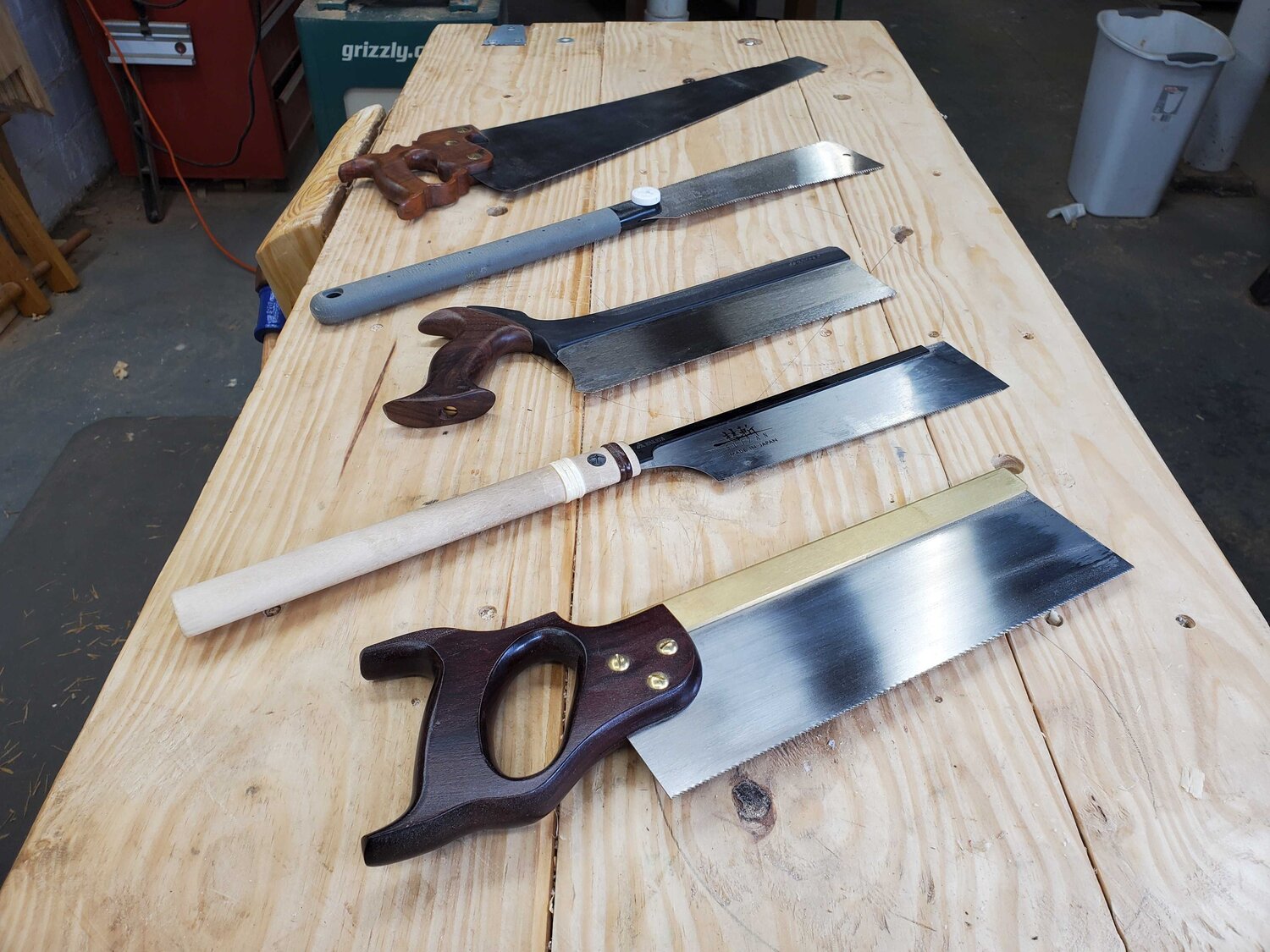10.10.22
Okay, this one's about some of the very specific hand saws i learned about when i was nerdin out real hard on finer woodworking stuff a while back. Basically, i went down a wikipedia/google/youtube rabbit-hole, and i've barely scratched the surface. Here are some of the things I learned/found useful in no particular order.
Western VS. Japanese?
When comparing Western and Japanese saws—it's important to understand that each is designed to function inside a particular tradition— specifically, a particular method of holding and supporting the wood that's being worked.
In the West, woodworkers tend to rely on heavy benches equipped with vises, clamps, holdfasts, and jigs. Japanese workholding, on the other hand, is far more likely to use the woodworker's body as a workholding device. The Japanese workbench is most often as simple as a beam on a couple of sawhorses or, with some projects, just the floor.
While there are many differences between the two styles of saws, there is no right answer as to which one is better. What's more important is which type is best suited for the needs of the project. That's why many experienced woodworkers keep both types in their shops.

